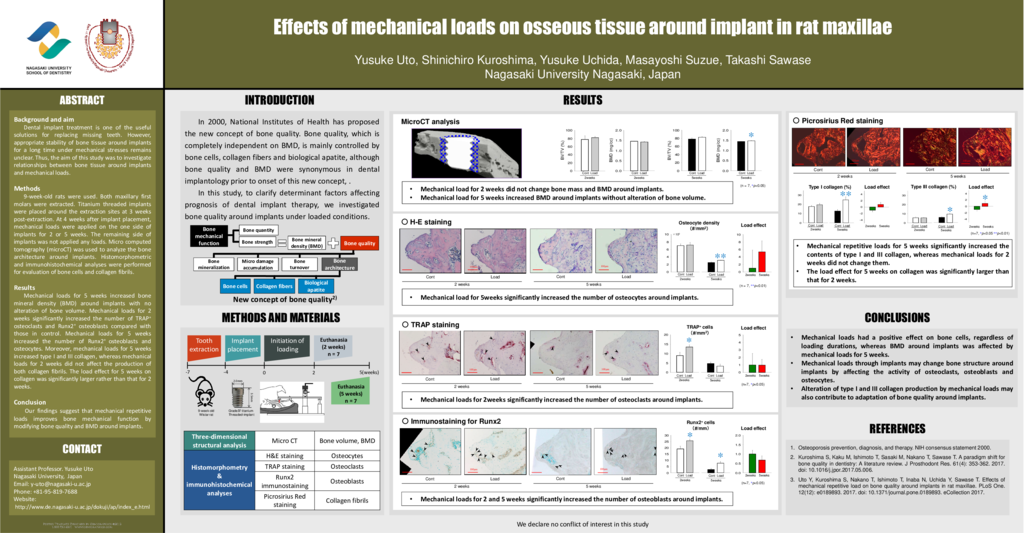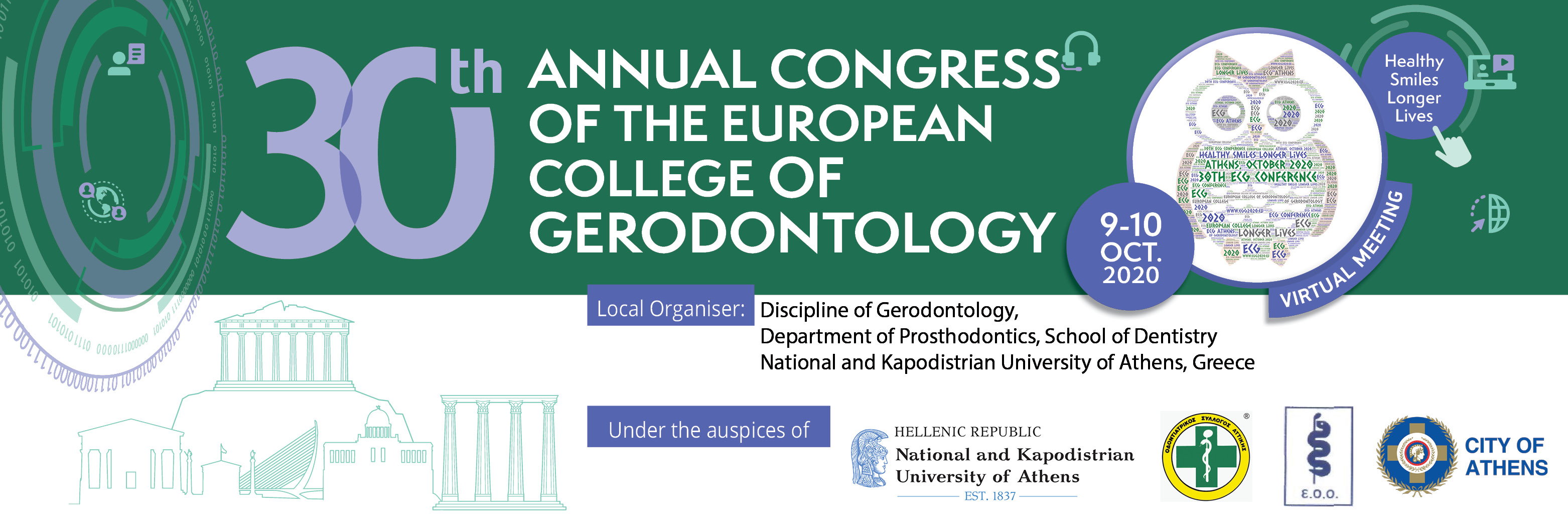Background and aim: Dental implant treatment is one of the useful solutions to replacing missing teeth. Bone resorption around implants sometimes progresses under peri-implantitis, which negatively affect treatment success of patients. However, appropriate maintenance of bone tissue around implants for a long time under mechanical stresses such as occlusal and parafunctional loads remains unclear. Thus, the aim of this study was to investigate relationship between bone tissue around implants and mechanical loads mimicking occlusal loads. Methods: 9-week-old female, wistar rats were used. Both maxillary first molars were extracted. Grade IV titanium threaded-implants were placed in the extraction sites at 3 weeks post-extraction. At 4 weeks after implant placement, mechanical loads were repetitively applied on the one side of implants for 2 or 5 weeks (twice a week/ 3Hz/1800cycles). The remaining side of implants was not applied any loads as a control (n = 5 per each group). Micro computed tomography was used to analyze an architecture of osseous tissue around implants. Histomorphometric and immunohistochemical analyses were performed for quantitative analyses of bone cells and collagen fibrils. Results: Mechanical loads for 5 weeks increased bone mineral density around implants without alteration of bone volume. Mechanical loads for 2 weeks significantly increased the number of tartrate-resistant acid phosphatase-positive osteoclasts and Runt-related transcription factor 2-positive osteoblasts when compared to those in control. Mechanical loads for 5 weeks increased the number of osteoblasts and osteocytes without changing osteoclast numbers. Moreover, mechanical loads for 5 weeks increased type I and III collagen, whereas mechanical loads for 2 weeks did not affect the production of both collagen fibrils. The load effect for 5 weeks on collagen was significantly larger than that for 2 weeks. Conclusion: Mechanical loads had a positive effect on bone cells, regardless of loading durations, whereas BMD around implants was affected by mechanical loads for 5 weeks. Mechanical loads through implants may modify bone structure around implants by affecting the activity of osteoclasts, osteoblasts and osteocytes. Alteration of type I and III collagen production by mechanical loads may also contribute to the adaptation of bone quality around implants.
- 36 views



